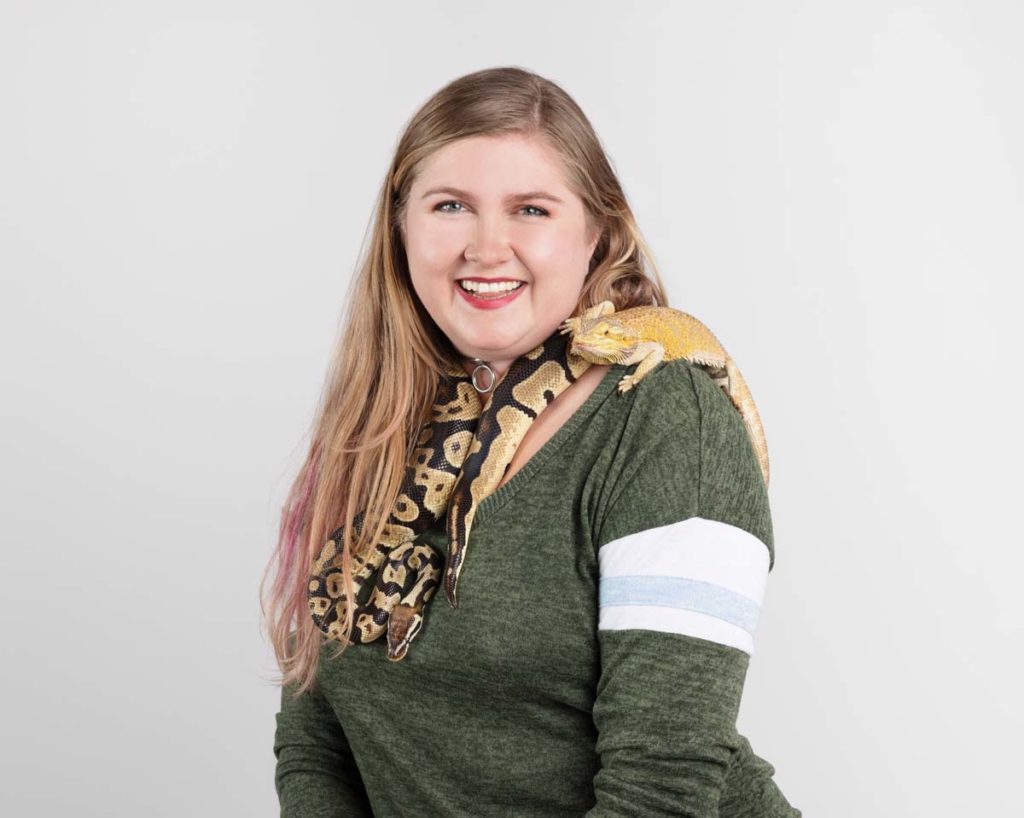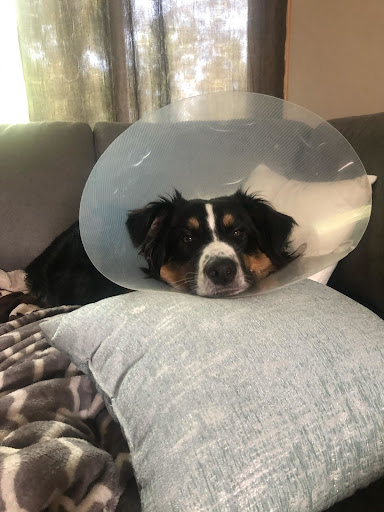Help! My Dog Needs to Rest!
One of the most difficult tasks as a dog owner is to be faced with a pet who needs to have major surgery, such as a fracture repair, correction of a torn cruciate ligament, or surgical removal of a herniated intervertebral disc. Rest and activity restriction are essential for these types of surgeries to be successful, but we can’t explain to our pets why they need to rest. Here are a few suggestions that might make this period of your lives easier.
1) Practice convalescence before you need it. Even if your dog is well housebroken and you don’t need a crate to keep them out of trouble, all dogs should be trained how to be confined to a crate or kennel should you need to use one for medical reasons. This training should be done long before your pet has an injury or surgery. Practice navigating your home with a pet who is wearing a large cone, cannot use stairs, get up on furniture, or go outside without being leashed. Trying this prior to surgery gives you time to purchase baby gates, get a larger crate, install ramps, or find tools that can help your dog be mobile such as a Walkabout harness (http://www.walkaboutharnesses.com/).
2) Toys! Dogs who are confined to a small room or crate can still often use puzzle toys, stuffed Kongs, or other “thinking” toys. Consider giving your dog all his meals through these types of toys rather than offering him a bowl of food. Be careful- stuffed Kongs or other food-dispensing toys can be a great distraction, but since many convalescing dogs are not able to be active, be very careful about monitoring overall calorie intake.
3) Teach some new tricks. Another way to busy your dog’s brain is to train some new behaviors that they can perform without much movement. Nose work, or teaching your dog to identify different items by smell, is a fun canine sport that can start with sniffing out items hidden under cups or inside boxes. Once your pet is back on their feet, you can build on those skills with harder challenges outdoors. Check out http://www.youtube.com/watch?v=YfL99xcEpXc for 20 great suggestions of activities that can keep your bed-ridden dog entertained.
4) Rest is important for dogs to heal properly, especially after orthopedic surgeries. If you have tried all of the above and your dog is still so active that he might not heal well, don’t be afraid to talk to your veterinarian about supplements or medications to help keep them sedate and calm throughout the healing process.
Common Rabbit Diseases
Do you share your home with a companion rabbit? Some common rabbit diseases can be hard to notice unless you know what to watch for. All rabbit owners should be on the watch for the following potential concerns:
Gastrointestinal Stasis (or GI stasis)
GI stasis is not a disease in itself, but a symptom of underlying problems such as dental disease, toxin ingestion, pain, stress, or infection. GI stasis is a syndrome in which a rabbit stops eating and stops producing stool. The rabbit GI tract is reliant on a constant influx of fiber (hay) in order to function normally and for the bacteria within the intestinal tract to thrive. As soon as a rabbit stops eating for any reason, the bacterial population becomes unhealthy and the rabbit starts to feel ill, stops passing stool, and can quickly become very lethargic and painful. Even a single skipped meal can be an emergency for a rabbit. Treatment of GI stasis involves pain control, hydration and nutritional support, and hopefully correction of the underlying cause of the episode of stasis.
Mange
Mange is a skin condition caused by tiny creatures called mites. The most common type of mange in rabbits is a condition called “walking dandruff” due to the large, white flakes of skin that are produced due to the infestation. Walking dandruff is caused by a mite called Chyletiella. Rabbits with walking dandruff are often quite itchy and their hair falls out in large clumps, usually beginning around their shoulders. This mite is uncomfortable for the rabbit and also can spread to other animals and humans. Treatment involves the use of a topical anti-parasitic medication.
Reproductive tract diseases
Female rabbits are quite prone to cancers of their reproductive tracts, with studies indicating that 80% of female rabbits have uterine disease by 6 years of age. We strongly recommend spaying female rabbits between 4 and 6 months of age to prevent them from developing reproductive tract diseases later in life.
Dental disease
Rabbits have teeth that grow constantly throughout their entire lives. Normally, their teeth are worn down by the abrasive fibers within their diet as well as by rubbing against each other. Rabbits may develop dental disease due to improper diet, abnormal positioning of the teeth (especially in short-faced breeds like Netherland dwarfs), or trauma to the teeth. If teeth do not wear properly, they can become elongated, leading to nasal discharge, eye discharge, pain when eating, or excessive drooling. Treatment of dental disease may involve correcting the diet, medication to address secondary infections, and/or grinding down of excessively long teeth.
Employee Spotlight: Laurel Lexvold

Laurel’s love of animals is always at the forefront of everything they do and they can be found making friends with every animal they meet when they are out and about. They currently have two cats (Finn and Otter), a hedgehog (Holly), a bearded dragon (Jasper), and a ball python (Rorschach). Their free time is spent trying to get the best possible photos of them all, and usually annoying them in the process. They are also a huge nerd and they love books, games, and reading obscure wikipedia articles. They are in their final semester of a veterinary technician degree and being in vet med is a dream come true for them!
What is your favorite aspect of veterinary medicine?
I love the fast paced work and energy of working in a veterinary clinic. No two days are the same and every animal has unique needs. The challenge of working with my hands and helping animals in such a practical way is so fulfilling. I especially love winning over the animals that are shy or frightened and showing them that the vet is not necessarily a scary place.
What do you think is special about St. Francis?
St Francis is so special as a clinic and community. The team here is dedicated not just to the pets and clients but to each other. This is a place where the animals come first and everyone strives to make our corner of the world a little better. St Francis is also committed to diversity and inclusion and it makes a difference. It’s such a welcoming place to be!

